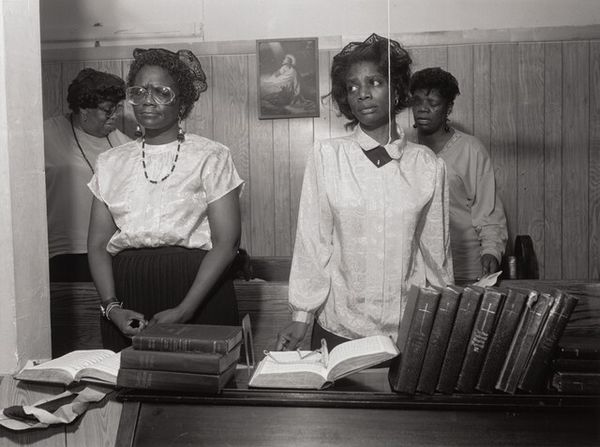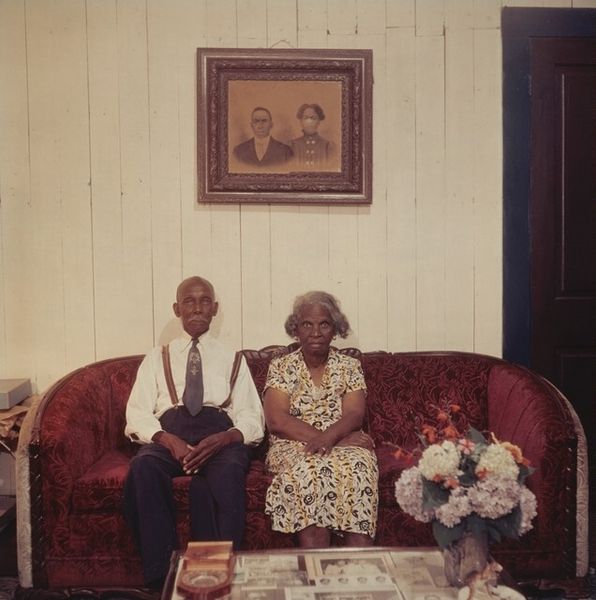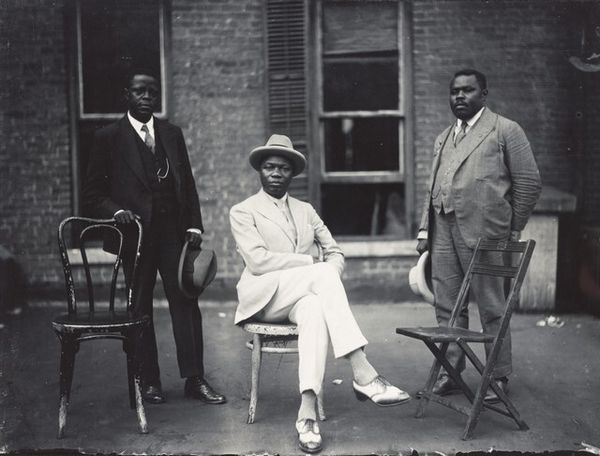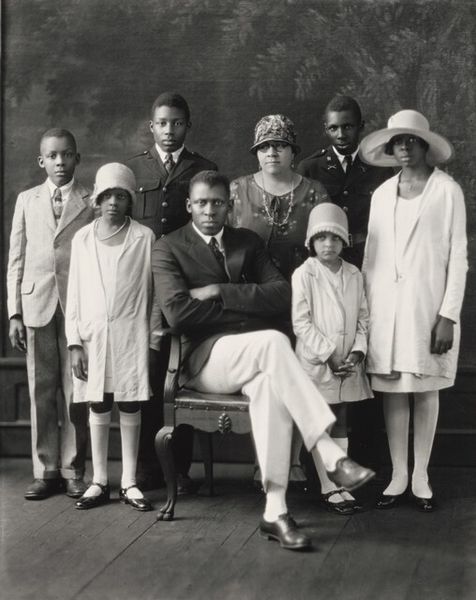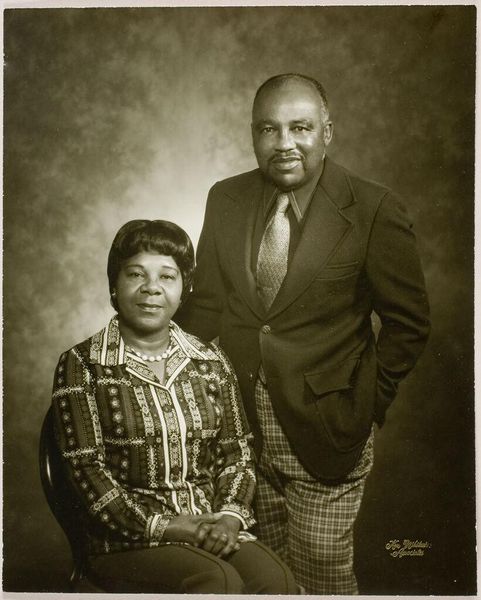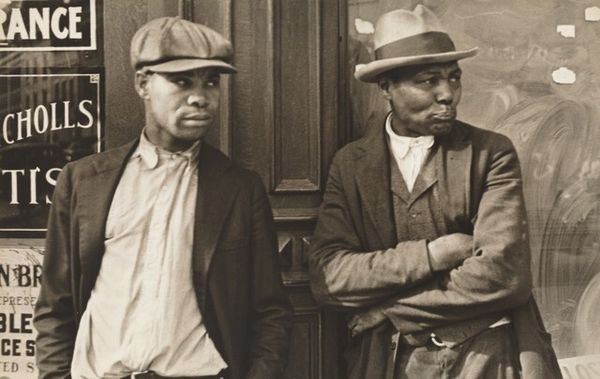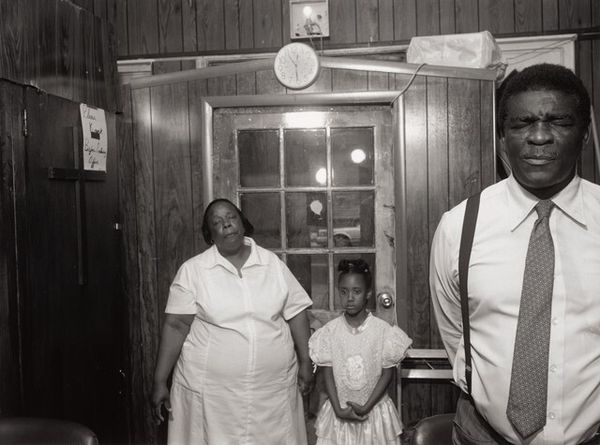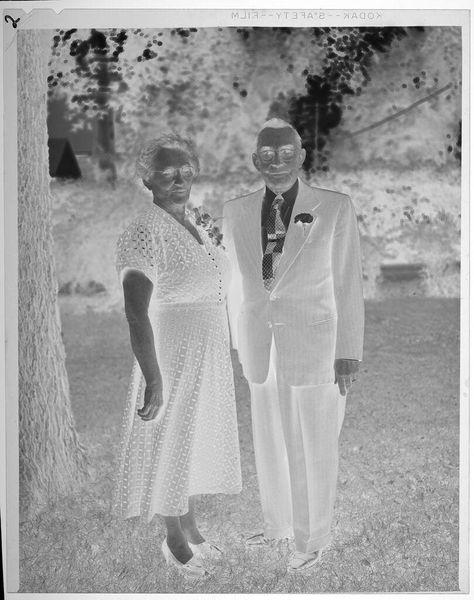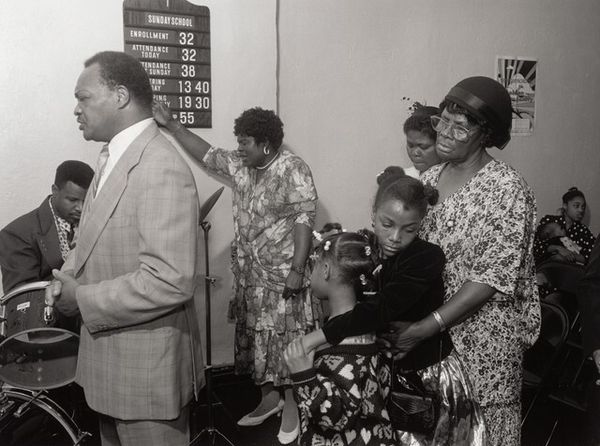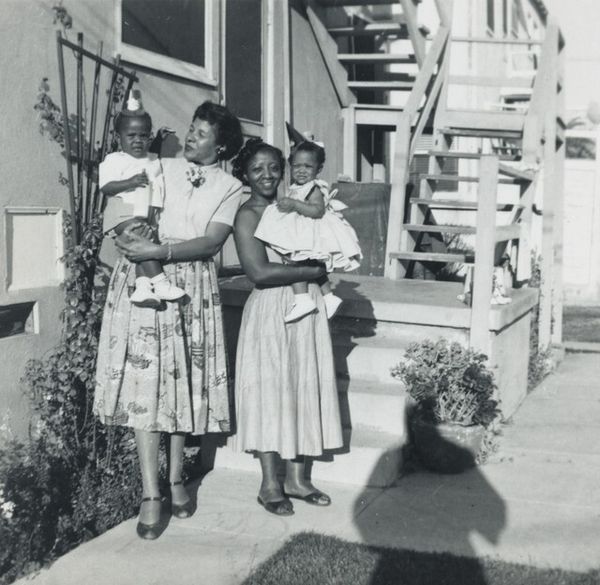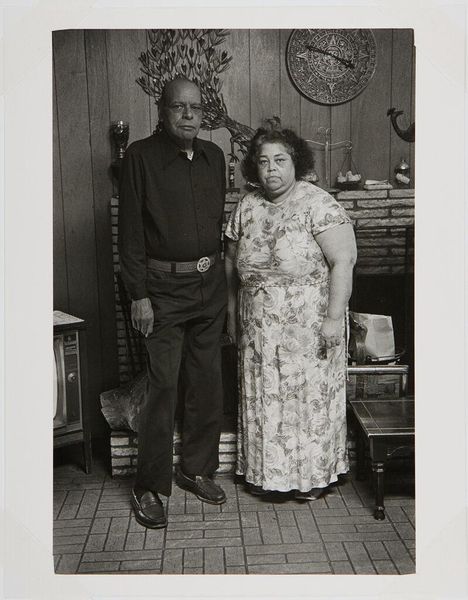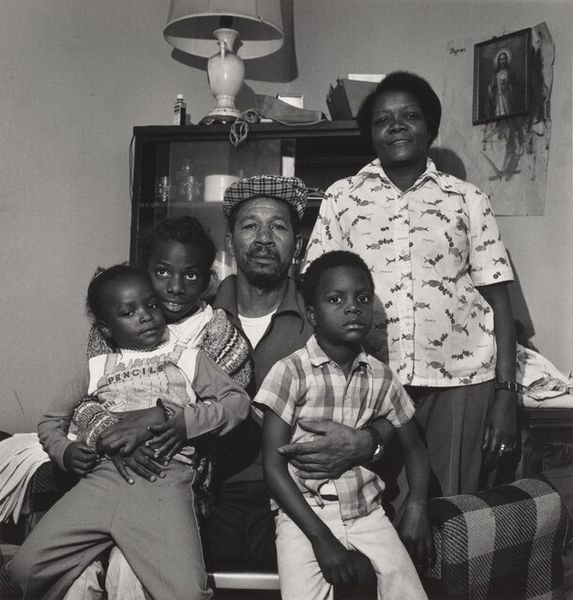
Dimensions: sheet: 28.3 × 35.4 cm (11 1/8 × 13 15/16 in.) image: 25.4 × 31.4 cm (10 × 12 3/8 in.)
Copyright: National Gallery of Art: CC0 1.0
Editor: So, here we have Gordon Parks’ “Pauline Terry and Her Husband, Detroit,” a photograph taken after 1950. It's a very striking image, and the crisp black and white tones really emphasize the textures of their clothing. What's your interpretation? Curator: Well, I'm immediately drawn to the materiality within this image. Consider the labor involved in producing their clothing, especially the details like the tailoring of his suit and the intricate hat worn by Pauline. Look closer at the hat. It shows incredible care, but its construction would be very accessible to many African-American women and local dressmakers within their communities, it would’ve been something attainable that showed craftsmanship outside of high art, blurring those perceived lines. Editor: That's fascinating. I hadn't considered the production aspect so closely. Curator: Precisely! And consider the photograph itself. Parks was working within a specific social context, highlighting the lives and experiences of everyday African Americans. How does the material representation of this couple challenge established societal norms around labor and class? Editor: So, by focusing on their clothes and belongings, Parks is making a statement about their dignity and place in society? Curator: Exactly! Even the cigar held by Mr. Terry can be examined as a symbol of labor, class aspiration, or perhaps even rebellion within the constraints of their environment. How might the act of being photographed change their own relationship with their identities and representation? Editor: I see what you mean! Thinking about the photograph as a material object itself also adds another layer of meaning, given Parks' commitment to social justice through photography. Curator: Indeed! Analyzing art through a material lens brings us closer to understanding the complex narratives of production, labor, and social dynamics embedded within the artwork. Editor: This has really broadened my perspective! I'll definitely look at art differently now, thinking more about materials, labor, and context.
Comments
No comments
Be the first to comment and join the conversation on the ultimate creative platform.
